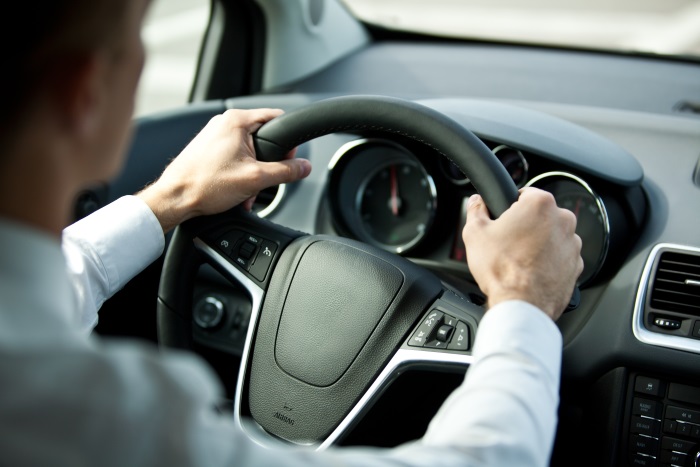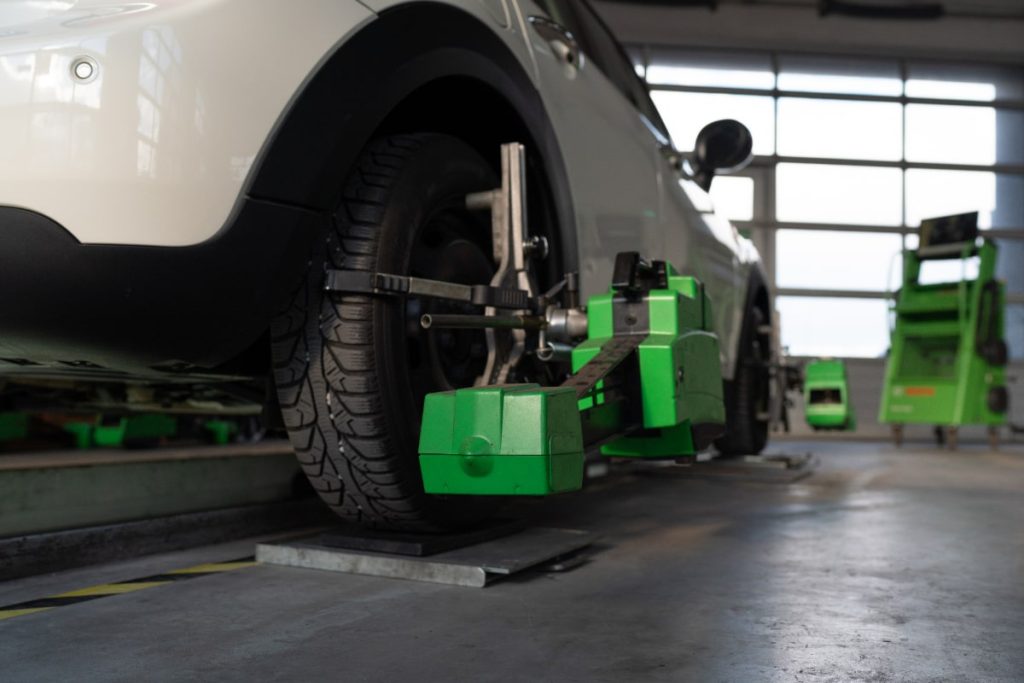
Is there anything more frustrating than having your car pull to one side while you’re driving? It’s hard to focus on safe driving when you’re constantly tugging your steering wheel left or right just so you can keep a straight line. Not only is it annoying, but it can be dangerous too! When your car pulls in the opposite direction you want it to, it’s a real safety hazard.
The worst part is you have no idea what’s causing it, or if this needs car repair.
Luckily, we can help with that.
One of the Most Common Causes of Pulling is Wheel Alignment

The most common reason a car pulls to one side is that the wheel alignment is off. Whether it skews to the side over time, or you hit a particular vicious pothole, wheel alignment will be altered by driving conditions, and it should be checked regularly.
Wheel alignment is exactly what it sounds like: your wheels and axles make a rectangle, parallel to each other and at a right angle to the road. Wheel alignment has three major angles: camber (inward/outward tilt of the tire), caster (steering axis angle from the side), and toe (how parallel your wheels are from the top).
A technician will line up your wheels and axles with each other to make this rectangle, and make adjustments to the suspension angles to impact the wheel position.
Your mechanic will make the proper adjustments for your car using manufacturer specifications and proper wheel alignment technology and tools.
Fun Fact: Roads Are Never Built Completely Level
Almost all roads are built with a slight slope to the side where the drainage is located. An apparent straight road will be angled towards the shoulder to allow for water to more easily drain away. This road slope is another factor that could be the cause of your car pulling to one side. Many automotive professionals will account for this slope in their alignment calculations.
When Should I Get My Wheels Aligned?
We recommend getting a wheel alignment every time you switch your tires for the appropriate driving season.
Your Car Still Drifts To The Left Or Right After Alignment? Here Are Some Other Reasons.
If you’ve recently had your wheel alignment done, there are a few more culprits we can investigate, including worn suspension parts, uneven wear in your brake system, or a damaged wheel cylinder.
Let’s take a closer look at some of the possible causes of why your vehicle pulls to one side.
1. The Air Pressure In Your Tires Is Inconsistent

Sometimes the solution is as simple as adding some air. Tire pressure fluctuates as you drive, and sometimes one tire will have less pressure than the others. If you find your car pulling to one side, the first thing you should do is check your tire pressure and add more if necessary.
If this fixes your problem, fantastic! If you still notice your car pulls to the left or right, the problem might be a bigger one.
2. You’re Experiencing Tire Conicity
Tire conicity refers to a problem in a tire when it’s made. Sometimes during manufacturing, one of the components becomes misaligned and causes the tire tread rubber to harden in a slight cone shape, rather than the proper cylinder shape. That causes your car to pull to whatever side the defective tire is on. This kind of conicity is apparent right away in new tires, and is covered under warranties.
If you begin to notice a pull after several thousand kilometres have been put on your tires, this is most likely due to uneven wear caused by driving conditions (like rough winter roads) or a suspension issue. Bring your car to us, and we’ll be able to more accurately diagnose the problem.
3. There’s A Worn Out Part In The Steering Or Suspension
If it’s not your tires, it may be your steering or suspension causing your car to pull to one side. Worn out components will impact how your car drives.
This is Also Called a Memory Steer
Memory steer is an industry term for a car that pulls in the direction you just turned. For example, if you turned left down a street, suddenly your car starts pulling to the left. This is caused by tie rods, strut bearings, ball joints and other components in your suspension and steering.
4. Your Brakes Are Wearing Unevenly

If your car is pulling while you brake, the braking system is where we’ll check first. An example of a brake-caused pulling problem is stuck calipers, usually making grinding noises. Calipers are what apply the pressure to the brake pad, and if one is stuck part way back, your brakes will wear unevenly.
Brakes are especially important in slippery winter and spring conditions, so if you notice anything odd about your brakes, make an appointment with us right away.
5. Your Tire Tread is Causing the Vehicle Pull
If you notice uneven tread wear on your tires, it’s likely due to improper wheel alignment, uneven air pressure, or issues with your suspension components. The more pronounced the wear becomes, the more your car pulls to one side.
If you’ve recently swapped out your tires (either to summers/winters, or because you bought a new set), the different tread patterns than what you’re used to might be the culprit behind the vehicle pull. Tires with more aggressive tread patterns (such as off-road) will drive differently than a lower-profile tread, and you might feel your steering pull more accordingly.
6. Your Wheel Rims Have a Dent
Hitting potholes, curbs, or other road hazards can dent the rim of your wheel. A wheel that has been dented or is slightly bent can cause the tire to sit unevenly. It could also cause a slow leak or otherwise inhibit the tire’s ability to hold air. Either or both these issues can affect the balance and wheel alignment, and might be the reason your car pulls to one side.
If you notice a vibration or wobbling in the steering wheel, especially at high speeds, and see a visible dent or deformation in the rim of a wheel, it could be the cause of the car’s pulling.
7. Your Tire Haven’t Been Properly Rotated
Improper tire rotation can lead to uneven wear patterns, which may result in the car pulling to one side. Make sure you rotate your tires at the recommended intervals, which is usually around 8,000 km. A professional mechanic will usually do a tire rotation with every oil change, and will take into account the specific rotation pattern of your vehicle (which will vary depending on whether it’s front-wheel drive, rear-wheel drive, or all-wheel drive).
8. You Have a Bad Wheel Bearing
If you hear strange grinding noises, or notice your steering wheel start to pull, wobble, or shake when you turn, it could indicate a problem with your wheel bearings. Wheel bearings are what allow the wheel to rotate smoothly. If they become worn out or damaged, it increases the friction on that particular wheel, and result in the car pulling to one side.
I’ve Heard About Something Called Torque Steer – What Is That?
Torque steer sounds like something race cars would have, which is kind of true. Torque steer mostly impacts front-wheel-drive cars (which are high-performance vehicles), and refers to your car pulling to one side during acceleration.
Torque steer is most often caused by the transversely mounted engine. The setup in front-wheel-drive cars causes engine power to be sent to one tire more than the other, which causes the car pull.
Unless you own a high-powered front wheel drive car and drive in a more professional capacity, or are an avid car enthusiast, this is something you don’t have to worry about with your car.
If Your Car Is Pulling to One Side, Bring It to Us
We want your car to be in tip top shape. If you find yourself heading left or right, head right to us. We’ll diagnose and fix the problem, getting you back on the road in a car that will go in the direction you want.








